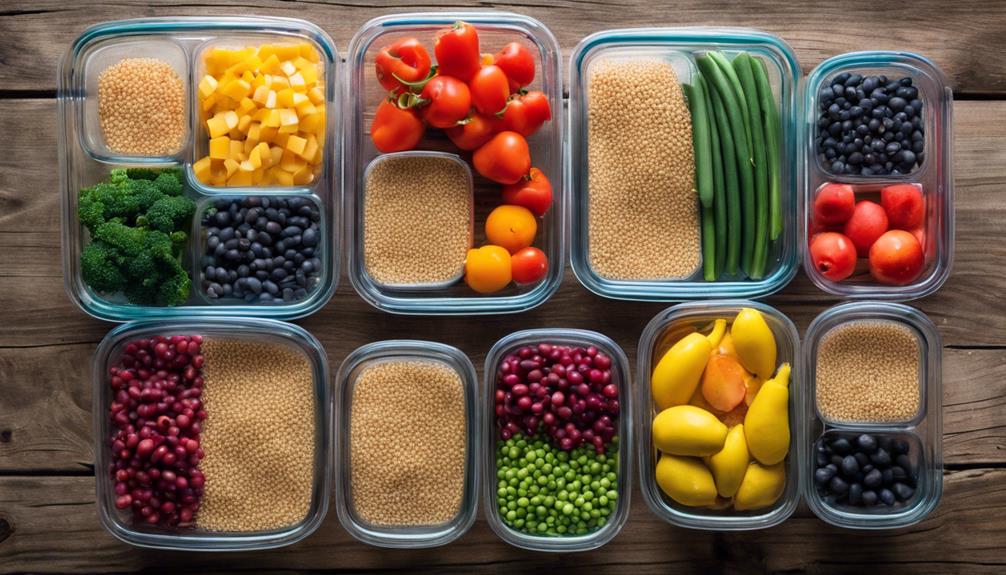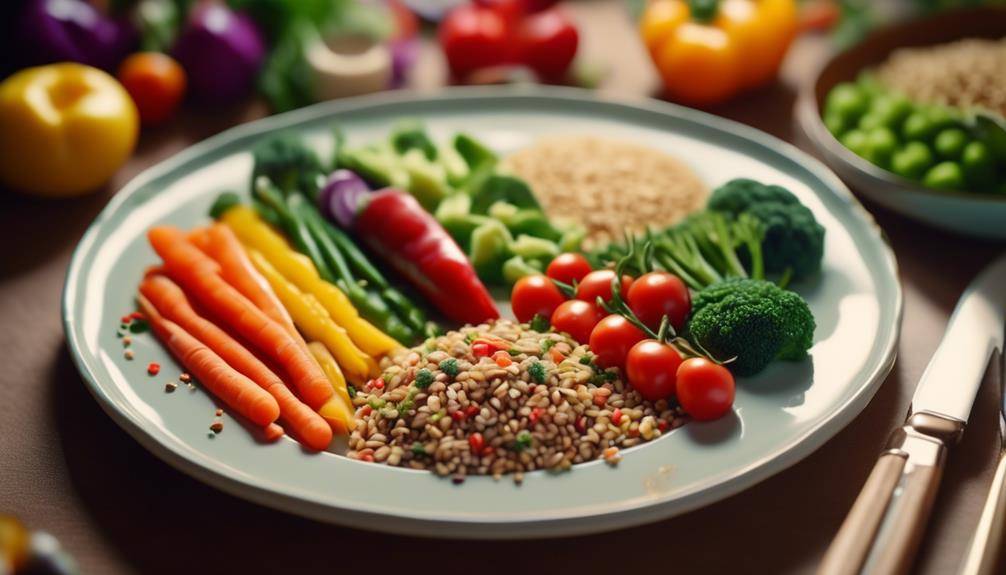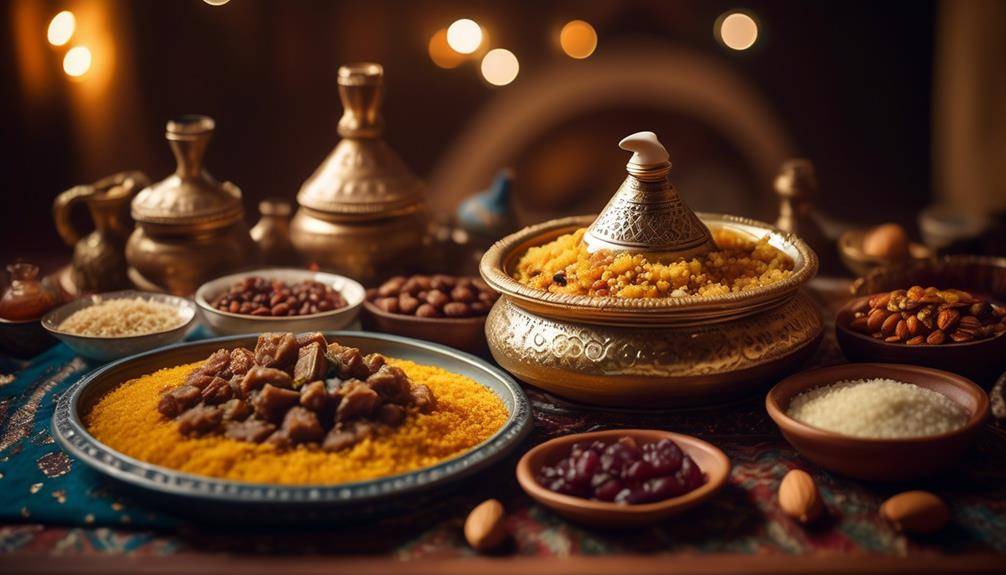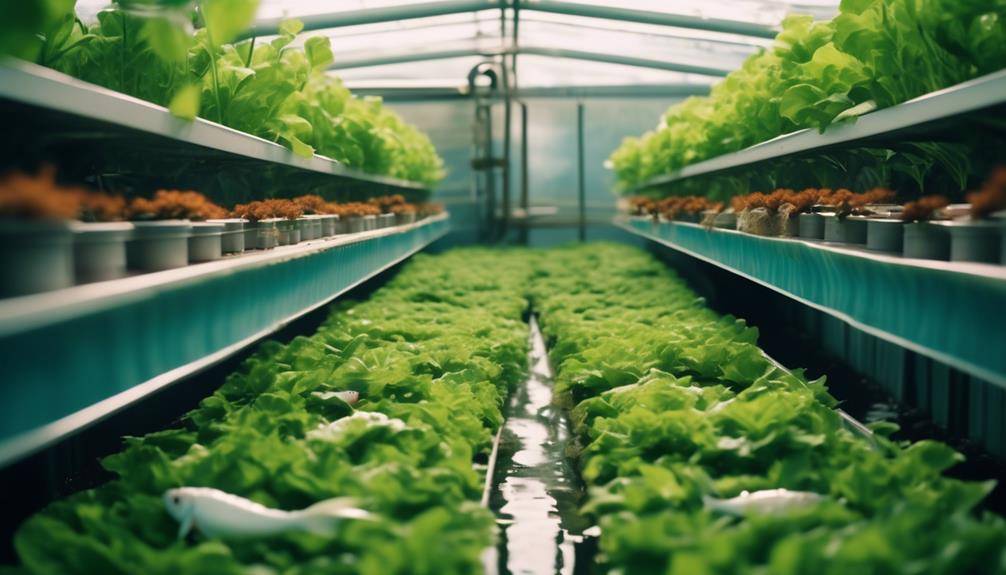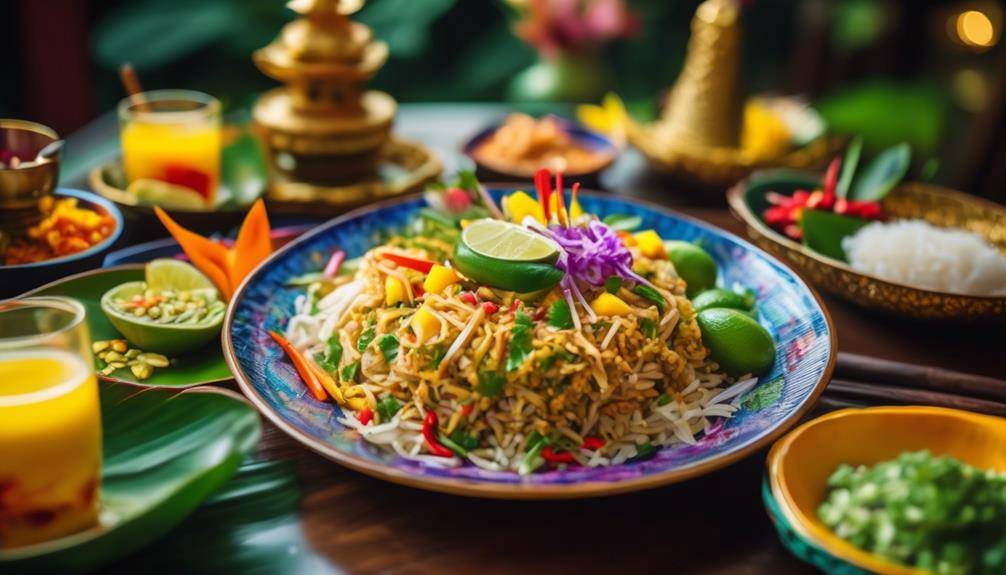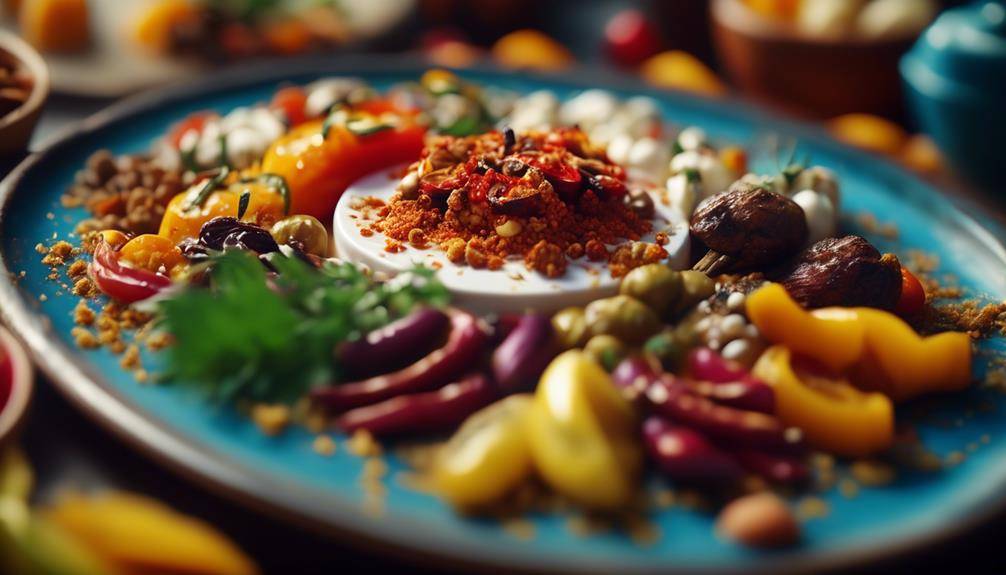The Rich Legacy of Cowboy Stew

A Taste of the Old West
The Rich Legacy of Cowboy Stew is more than just a dish; it’s a slice of American history, a culinary artifact that offers a glimpse into the rugged lives of the cowboys who once roamed the American West. The stew, with its hearty blend of meats, vegetables, and beans, has become a symbol of frontier ingenuity, where limited resources were transformed into nourishing meals capable of sustaining the toughest of men. As we explore the origins, cultural significance, and modern interpretations of Cowboy Stew, we’ll discover how this simple, yet satisfying dish has endured the test of time, becoming a beloved staple in kitchens across the country.
The Origins of Cowboy Stew: A Reflection of Frontier Life
To truly appreciate Cowboy Stew, one must first understand the context in which it was created. The American cowboy, an icon of the Old West, was a hardworking, resilient figure who spent long days driving cattle across the vast plains. These cattle drives, which often spanned hundreds of miles, were grueling, demanding both physical endurance and mental fortitude. The cowboys, typically young men, worked from sunup to sundown, navigating treacherous terrain and braving harsh weather conditions. Their diet needed to be as robust as they were.
The chuckwagon, a mobile kitchen on wheels, was the lifeline of any cattle drive. It was here that the cook, often called the “cookie,” would prepare meals for the entire crew. Given the challenging conditions and limited ingredients available on the trail, the cookie had to be resourceful. Meals needed to be simple, nourishing, and capable of feeding a large group with minimal fuss. Cowboy Stew, with its flexible ingredients and one-pot preparation, fit the bill perfectly.
Ingredients of Necessity: The Heart of Cowboy Stew
The beauty of Cowboy Stew lies in its adaptability. Unlike more rigidly defined dishes, Cowboy Stew could be made with whatever ingredients were on hand. This flexibility was essential for cowboys, who couldn’t afford to be picky or wasteful. The stew typically included a mix of meat, beans, vegetables, and spices, all simmered together in a single pot. The result was a hearty, filling meal that provided the energy needed for a long day on the range.
Meat was the primary source of protein in Cowboy Stew. Beef, often in the form of ground beef or stew meat, was a common choice, as cattle were plentiful on the trail. However, other meats like pork, venison, or even game were used when available. The meat was usually browned to develop flavor before being simmered with the other ingredients.
Beans were a staple in the cowboy diet, prized for their nutritional value and ability to keep well over long periods. Pinto beans, black beans, or kidney beans were commonly used in Cowboy Stew, adding bulk and a rich, earthy flavor. Beans also complemented the meat, creating a balanced dish that was both satisfying and economical.
Vegetables were often limited on the trail, but when they were available, they played a crucial role in Cowboy Stew. Potatoes were a favorite, as they added heartiness to the dish and absorbed the flavors of the stew as they cooked. Onions, garlic, and occasionally bell peppers or corn were also included, providing flavor and texture.
Spices and seasonings were essential for making the stew palatable and flavorful. Simple seasonings like salt, pepper, and chili powder were often used, with cumin and paprika adding warmth and depth. The seasoning of Cowboy Stew was typically bold, reflecting the robust nature of the dish itself.
The Chuckwagon: The Heart of the Cowboy Camp
The chuckwagon, the mobile kitchen from which Cowboy Stew often emerged, was an innovation credited to Charles Goodnight, a Texas cattle rancher, in 1866. Recognizing the need for a better way to feed cowboys during long cattle drives, Goodnight repurposed an old army surplus wagon, outfitting it with shelves, drawers, and storage compartments to hold cooking supplies, utensils, and provisions. The chuckwagon quickly became the nerve center of any cattle drive, and the cookie was its master.
Life on the trail was tough, and the chuckwagon was more than just a place to eat—it was a sanctuary of sorts, where cowboys could gather, share stories, and enjoy a warm meal after a long day. The cookie was often the most respected member of the crew, responsible not only for cooking but also for rationing supplies, managing the fire, and even administering first aid when necessary. The meals prepared in the chuckwagon, including Cowboy Stew, were essential for keeping morale high and energy levels up.
The Cultural Significance of Cowboy Stew
Cowboy Stew is a dish that embodies the spirit of the American West—a spirit of resilience, resourcefulness, and camaraderie. The stew is more than just sustenance; it’s a connection to a way of life that was rugged, challenging, and often romanticized. In the cowboy culture, meals were a time for coming together, for finding comfort in a hot meal after a long day of hard work. Cowboy Stew, with its hearty ingredients and simple preparation, was a dish that brought people together, whether around a campfire in the middle of the prairie or at a family dinner table.
The stew also reflects the broader history of the American frontier. The ingredients and preparation methods of Cowboy Stew are a testament to the ingenuity of those who lived and worked on the frontier. They had to make do with what they had, and from this necessity, a culinary tradition was born. The stew is a symbol of the blending of cultures and traditions that occurred in the West, where Native American, Mexican, and European influences came together to create a unique and enduring cuisine.
Cowboy Stew in Modern Times: A Dish That Endures
While the days of the cattle drives are long past, Cowboy Stew remains a popular dish in modern kitchens. Its enduring appeal lies in its simplicity, versatility, and the comfort it provides. Today, Cowboy Stew is often made in homes across the country, enjoyed by families as a hearty, comforting meal. The dish has also found its way into the menus of restaurants, where it is often featured as a nod to the rustic, robust flavors of the Old West.
One of the reasons Cowboy Stew has endured is its adaptability. The dish can be made with a variety of ingredients, allowing cooks to tailor it to their tastes and what they have on hand. Whether made with ground beef and pinto beans, or with sausage, black beans, and corn, Cowboy Stew can be adjusted to suit any palate. It can also be made in large quantities, making it ideal for feeding a crowd, whether at a family gathering, a potluck, or a camping trip.
In addition to its adaptability, Cowboy Stew is also appreciated for its nutritional value. The combination of protein-rich meat, fiber-filled beans, and nutrient-dense vegetables makes it a balanced meal that provides sustained energy. This makes it a popular choice for those who lead active lifestyles, as well as for anyone looking for a satisfying, nourishing dish.
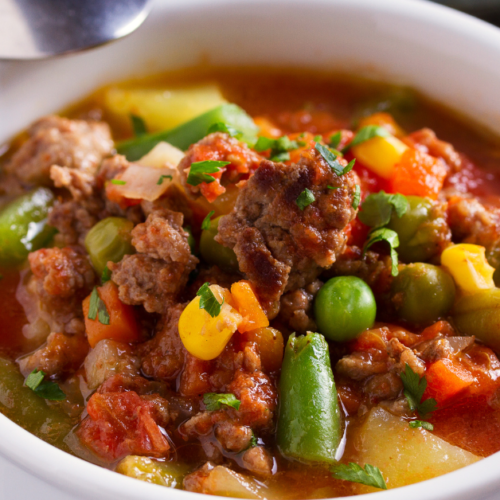
Cowboy Stew with Hamburger Meat
Ingredients
- Ingredients:
- 1 lb 450g ground beef (hamburger meat)
- 1 large onion chopped
- 3 cloves garlic minced
- 3 medium potatoes peeled and diced
- 1 can 15 oz pinto beans, drained and rinsed
- 1 can 15 oz kidney beans, drained and rinsed
- 1 can 15 oz corn, drained
- 1 can 14.5 oz diced tomatoes, with juice
- 1 can 8 oz tomato sauce
- 2 cups beef broth or water
- 1 green bell pepper chopped
- 1 jalapeño pepper chopped (optional, for heat)
- 2 teaspoons chili powder
- 1 teaspoon ground cumin
- 1 teaspoon smoked paprika
- Salt and pepper to taste
- Olive oil for cooking
Instructions
- Instructions:
- Brown the Hamburger Meat:
- In a large pot or Dutch oven, heat a tablespoon of olive oil over medium-high heat. Add the ground beef and cook until it is fully browned, breaking it up with a spoon as it cooks. This should take about 5-7 minutes. Once browned, drain off any excess fat.
- Cook the Aromatics:
- Add the chopped onion and minced garlic to the pot with the browned beef. Sauté for about 3-4 minutes, until the onion is softened and translucent, and the garlic is fragrant.
- Add the Vegetables:
- Stir in the diced potatoes, green bell pepper, and jalapeño pepper (if using). Cook for another 3-4 minutes, allowing the vegetables to soften slightly.
- Season the Stew:
- Sprinkle in the chili powder, cumin, smoked paprika, salt, and pepper. Stir well to coat the meat and vegetables with the spices, releasing their flavors.
- Add the Beans and Tomatoes:
- Pour in the pinto beans, kidney beans, corn, diced tomatoes (with juice), and tomato sauce. Stir everything together to combine.
- Simmer the Stew:
- Add the beef broth (or water) to the pot and stir to mix. Bring the stew to a boil, then reduce the heat to low. Cover the pot and let the stew simmer for about 30-40 minutes, or until the potatoes are tender and the flavors have melded together. Stir occasionally to prevent sticking.
- Adjust Seasoning:
- Taste the stew and adjust the seasoning with more salt, pepper, or spices if needed. If you like a thicker stew, you can simmer it uncovered for an additional 10-15 minutes to reduce the liquid.
- Serve:
- Ladle the Cowboy Stew into bowls and serve hot. It pairs well with crusty bread, cornbread, or a side salad. For added flavor, you can top the stew with shredded cheese, sour cream, or chopped fresh cilantro.
The Evolution of Cowboy Stew: Variations and Regional Twists
As with any dish that has been around for centuries, Cowboy Stew has evolved over time, with different regions and communities putting their own spin on the classic recipe. These variations reflect the diverse culinary influences that have shaped American cuisine, as well as the availability of ingredients in different parts of the country.
Texas Cowboy Stew, for example, often features bold, spicy flavors, with the addition of ingredients like jalapeños, chorizo, and hot sauce. This version of the stew reflects the influence of Mexican cuisine, which has had a significant impact on Texan food. The use of spices like cumin and chili powder in Texas Cowboy Stew gives it a distinctive Southwestern flavor, making it a favorite among those who enjoy a little heat in their food.
In the Southwestern United States, Cowboy Stew might include ingredients like roasted green chilies, hominy, and black beans, giving it a flavor profile that is distinct from the Texas version. The use of hominy, a type of corn that has been treated with an alkali, is a nod to Native American culinary traditions, which have played a significant role in the development of Southwestern cuisine. The addition of green chilies adds a smoky, slightly spicy flavor to the stew, making it a comforting and satisfying dish.
In the Midwest and Great Plains, where game meats like venison are more readily available, Cowboy Stew is sometimes made with venison or other wild game. This version of the stew has a rich, earthy flavor that reflects the abundance of natural resources in the region. The use of game meats also adds a layer of authenticity to the dish, as it harkens back to the days when cowboys and frontiersmen relied on hunting to supplement their diet.
Vegetarian Cowboy Stew is another variation that has gained popularity in recent years, as more people seek out plant-based alternatives to traditional dishes. This version of Cowboy Stew typically includes a variety of beans, such as pinto beans, black beans, and kidney beans, as well as an array of vegetables like potatoes, corn, and bell peppers. The stew is seasoned with the same spices as the traditional version, creating a dish that is both hearty and flavorful, without the need for meat.
The Rich Legacy of Cowboy Stew; A Symbol of American Resilience
Cowboy Stew is more than just a dish; it’s a symbol of American resilience and resourcefulness. The stew, with its humble ingredients and simple preparation, represents the ingenuity of those who lived and worked on the frontier. It is a dish that was born out of necessity, but one that has endured because of its comforting, satisfying nature.
In many ways, Cowboy Stew is a reflection of the American spirit. It



